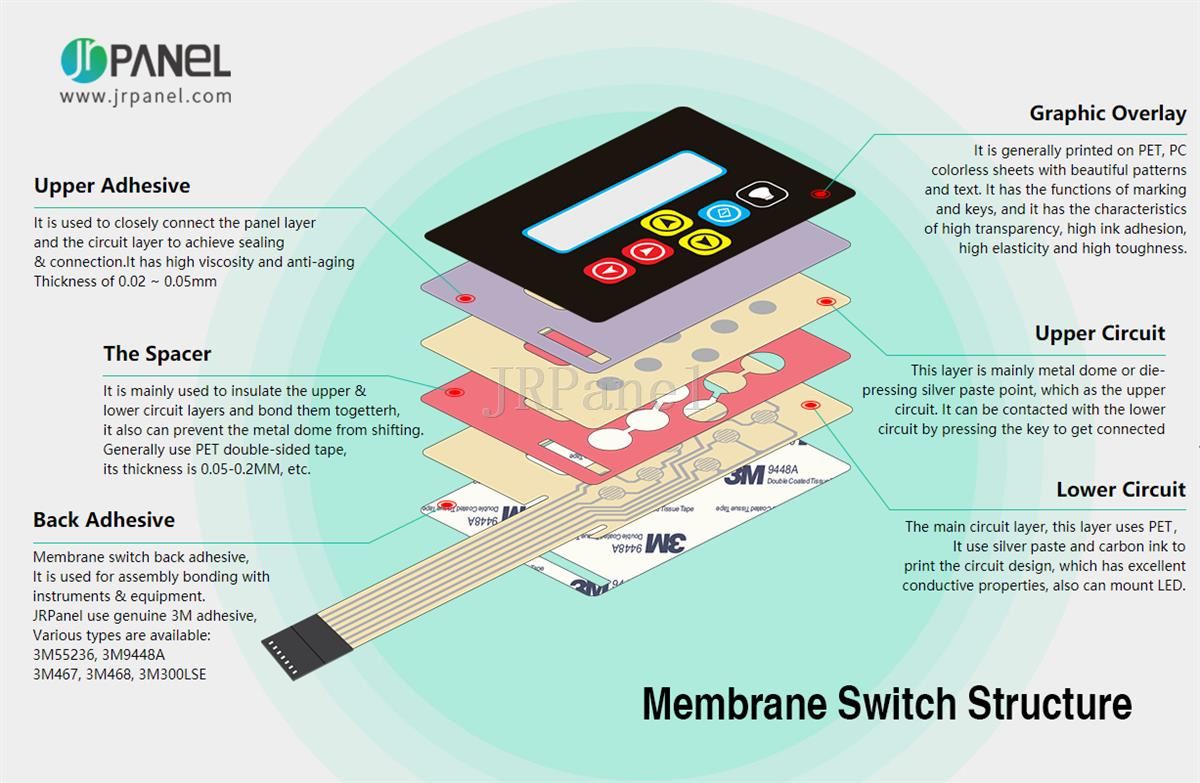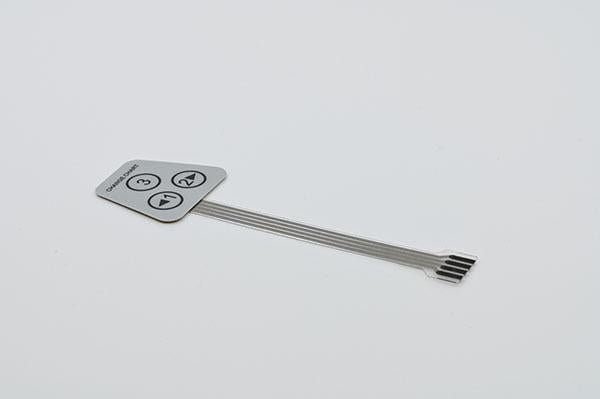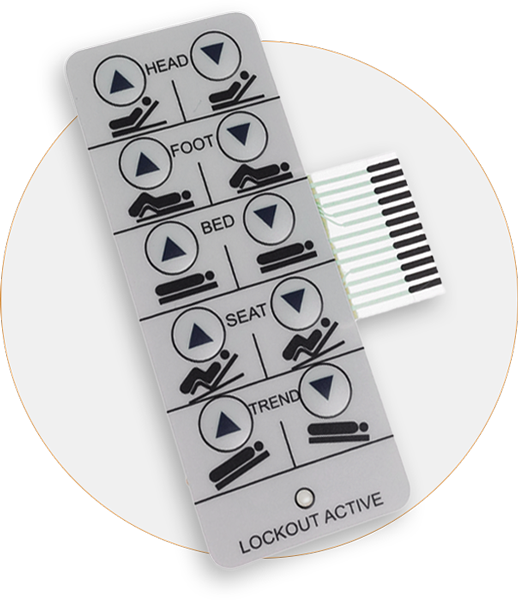Recognizing the Performance of Membrane Layer Switches Over for Interface Instruments
The functionality of membrane layer switches over represents a substantial development in customer interface design, incorporating effectiveness with aesthetic adaptability. As industries increasingly focus on individual experience, recognizing the subtleties of membrane button modern technology comes to be necessary.
What Are Membrane Layer Buttons?
Membrane layer buttons are cutting-edge user interface devices that promote individual interaction with electronic devices. These flexible parts include several layers, including a graphic overlay, spacer, and a printed circuit layer. The design enables for a smooth assimilation into numerous digital devices, boosting both the visual and practical aspects of individual interfaces.
Membrane layer switches are generally utilized in a broad array of applications, from household devices to industrial machinery and medical devices. Their construction typically includes a slim profile, making them a perfect selection for small designs. The responsive feedback supplied by these buttons can be engineered to fulfill specific individual preferences, making sure effective interaction in between the user and the device.
Toughness is another considerable benefit of membrane buttons, as they are immune to dirt, dampness, and chemicals, which enhances their life-span sought after atmospheres. In addition, these switches can be personalized in regards to shape, dimension, and visuals layout, enabling branding and user-specific functions. On the whole, membrane changes represent a sensible service for improving customer experience in electronic devices, integrating capability with visual appeal in a reliable fashion.
Exactly How Membrane Layer Changes Job
Operating on a straightforward principle, membrane switches over utilize a layered building to register individual input properly. Each switch is composed of multiple layers, consisting of a printed circuit layer, a spacer layer, and a leading visuals layer, which are designed to work with each other perfectly. When an individual presses the top layer, it presses the spacer layer, bringing the conductive components of the circuit layer right into call with each other.
This call creates a closed circuit, signifying the gadget to carry out a certain function. The layout enables various configurations, including responsive responses, which can enhance the user experience by providing a physical feeling upon activation. The products made use of in membrane layer buttons commonly consist of versatile substratums, such as polyester or polycarbonate, which make certain resilience and durability against wear and tear.

Key Benefits of Membrane Layer Switches

An additional considerable benefit is their compactness. Membrane layer buttons are thin and light-weight, which makes it possible for makers to save space in their devices without giving up performance. This feature is specifically useful in applications where weight and quantity are vital factors to consider.
Furthermore, membrane layer switches are immune to dust, dampness, and chemicals, boosting their resilience. This resilience extends their lifespan and reduces the requirement for constant replacements, causing expense financial savings with time.
Moreover, the responsive feedback provided by membrane buttons can be optimized to enhance customer interaction. They can include attributes such as elevated buttons or distinct clicks, enhancing usability and user experience.
Applications Across Industries
Interface tools utilizing membrane layer buttons are widespread in a wide range of sectors, showcasing their adaptability and functionality. Membrane Switch. In the clinical industry, membrane layer buttons are essential to gadgets such as analysis tools and client tracking systems, where their longevity and ease of cleaning are critical for keeping hygiene criteria. In the automobile market, these switches are employed in dashboard controls and infotainment systems, offering a sleek and contemporary user interface for customers.
In addition, the customer electronic devices field gain from membrane layer switches in devices and portable devices, where compact design and easy to use interfaces boost customer experience. Industrial applications additionally leverage membrane switches for control board in equipment and automation systems, stressing their effectiveness and resistance to severe environments.
In the aerospace and defense markets, membrane layer switches are made use of in cockpit controls and equipment, where reliability and efficiency under severe problems are vital. Furthermore, the gaming sector progressively incorporates membrane layer switches in controllers and game devices, adding to an interesting individual experience. Overall, the convenience of membrane layer changes enables their extensive use across many industries, emphasizing their relevance in modern customer interface style.
Future Fads in Membrane Layer Switch Over Innovation

In addition, using sophisticated products, such as polycarbonate and polyester movies, is anticipated to increase, giving boosted longevity and resistance to environmental stressors. These products add to the general long life of membrane switches, making them appropriate for harsher commercial applications.
Furthermore, the unification of clever modern technology, consisting of IoT connection, will make it possible for membrane layer buttons to interact with other devices and systems, assisting in a much more interactive user experience. This fad lines up with the expanding demand for wise devices throughout various sectors, from medical care to customer electronic devices.
Finally, personalization alternatives are anticipated to expand, enabling suppliers click site to produce bespoke remedies tailored to certain user requirements and preferences. These advancements will certainly position membrane buttons as necessary elements in the development of interface modern technology.
Conclusion
In conclusion, membrane layer changes stand for an essential improvement in user interface modern technology, offering a reliable and functional remedy for diverse digital applications. As developments in product scientific research and touch picking up technologies proceed, the performance and applicability of membrane buttons are expected to expand, enhancing their importance in modern-day digital gadgets.